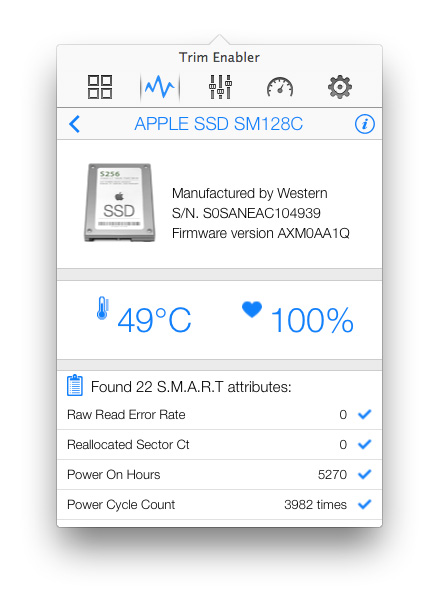
:max_bytes(150000):strip_icc()/003-enable-trim-for-any-ssd-in-os-x-ccc69e66a9124135aaa478e0c9b69f33.jpg)
This is partly because, at launch, Samsung segmented their SSD line with the high end professional 840 Pro using traditional MLC and the mainstream 840 using TLC (see below). They are still among the most expensive of consumer SSDs. As many reviews of proven, you will not be disappointed with the Samsung 840 Pro except when it comes to cost. Samsung is in the middle here where previous non-Samsung designs used 25nm NAND and Samsung used 27nm NAND and most of the industry is moving to 20nm NAND. The best all around performer with consistently amazing performance seems to be the Samsung 840 Pro with its 21nm NAND design paired with the excellent fourth generation Samsung MDX controller. I also have some thoughts on the best options for mSATA SSDs after the top three. With those important points out of the way, let’s move on to the available SSD models and my top three recommendations right now for 2.5-inch SSDs.

Read speeds are often more consistent and less prone to the variations seen with write performance. However, it is still true that 240GB or larger SSDs are almost always faster for writes than any of the smaller capacities. I also did some testing with Intel’s 520 SSD line and found that, with Intel’s custom firmware and a SandForce controller, write speeds decreased far less for typical benchmarks than with Crucial’s M4 SSD line. For example, a Crucial M4 128GB tops out at about 175MB/s write speed. The 120/128GB will be substantially faster than a 60/64GB model but not up to the 240/256GB models. This performance difference is a major consideration in your choice of SSD. The 64GB will top out at about 100MB/s write speed while the 256GB will top out at over 260MB/s. This means that comparing a 64GB and 256GB Crucial M4, for example, will show you drastic differences in write speed. What size SSD should you buy?Īs pointed out in many, many articles, SSDs are faster at writes when more flash channels are available. If you want to read more about this command, use the man trimforce command in an OS X Terminal. OS X also only enables TRIM on Apple-provided SSDs by default but now you can enable TRIM on third party SSDs with the trimforce command which became available in OS X 10.10.4. OpenBSD), while others require explicit enabling of TRIM (discard fstab option in older Linux distributions). An example of this trend is Crucial’s M4 SSD line (using 25nm NAND) where capacities were available in typical 64GB to 512GB sizes as compared to the newer Crucial M500 SSD line (using 20nm NAND) and capacities of 120GB, 240GB, 480GB, and 960GB.Īlthough most SSDs on the market have more intelligent garbage collection algorithms now than they used to, I still recommend that everyone enable TRIM ( Wikipedia article) on their systems. This capacity reporting trend has also now extended to many of the other SSD manufacturers because, as NAND manufacturing continues to move to smaller processes, additional NAND capacity is used to balance the potential downsides. For example, a SandForce-based SSD will actually have 256GB of flash memory but will be listed as 240GB because the extra flash memory is used by the chipset to attain the amazing performance levels and provide garbage collection even on systems where TRIM is not supported. That is why all SandForce designs are listed as lower capacity than the actual amount of flash memory in the SSD. The design of the SandForce chipset uses on-the-fly compression and extra flash memory to keep things running fast. Some notes on why SSD capacities are different between product lines The fact that Intel is continuing to use the SandForce chipset (with their own custom firmware) also validates how good the SandForce design really is. If you want a drive that uses a chipset made by someone other than SandForce or Samsung, the best current option is the Crucial M500 SSD line. In addition, another consideration is now mSATA SSDs, and PCI Express SSDs. There were previously SATA 3Gb/s and SATA 6Gb/s options but all slower options have vanished. Overall, the best SSD chipsets on the market for performance seems to be the Samsung chipsets and the SandForce chipsets although some other designs are also exceptional. Although originally published in February 2012, the date reflected on the article is the date of the last update. I also have a variety of articles about SSDs that can be accessed in the archives. As new models become available, this page is updated to reflect the best SSD options on the market. This page is a guide to my top recommendations for SSDs.


 0 kommentar(er)
0 kommentar(er)
